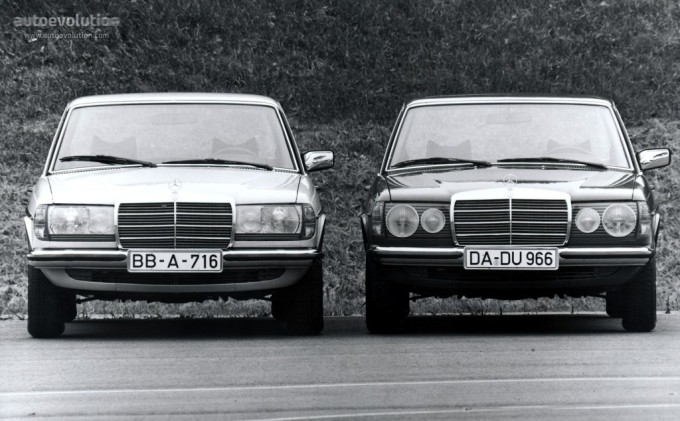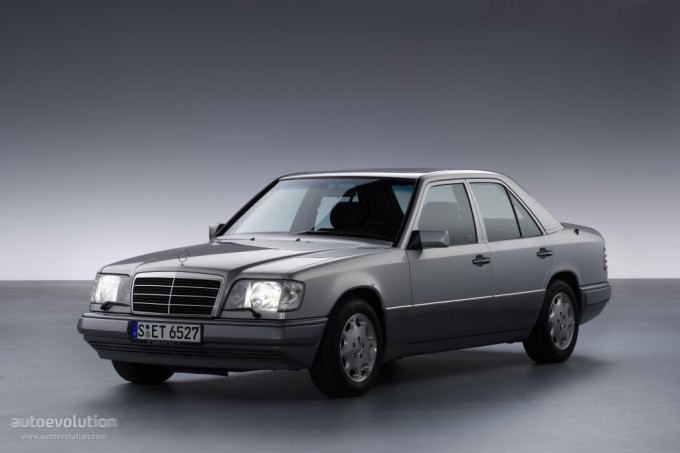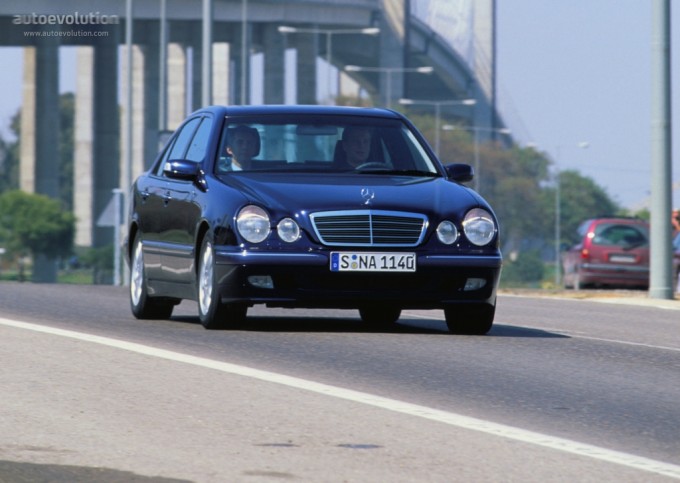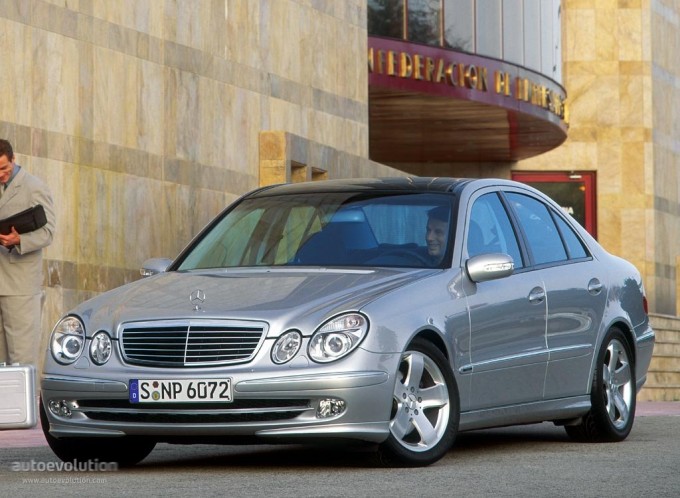The Mercedes-Benz E-class is notably the medium sized passenger saloon in its segment. Being the pioneer in automobile industry for the past 100 years, the Mercedes-Benz E-class has its own history of its own.
During the World War 2, the Mercedes-Benz production plant in Untertürkheim was badly jeopardized hence the possibility of introducing new models were come to an utmost impossible due to the lacking in manpower, resources and energy. When automobile production resumed in 1946 the Stuttgart brand fell back on the vehicle it had built from 1936 to 1942 badged as the 170V. It was the grandfather of today's E-Class. Earlier, the first vehicles to come off the assembly line were delivery vehicles – pickups and panel vans – along with ambulances and police patrol cars. These commercial vehicles were urgently needed for Germany’s reconstruction effort. Only thence, this model was made available in a form of elegant saloons of the upper mid-range category. The production for the 170V was continued until 1955 although the father of the E-class, the Ponton series came into the picture in 1953. The legendary E-class started ever since then until today.
The W136 was superseded with its younger brother, the W120 in 1953. It was the first Mercedes-Benz car to feature a three-box design with self-supporting chassis/body structure, known in Germany as the "Ponton". Fully integrated wings, a rectangular body outline, and the almost square-hew shape of the front end, the passenger compartment, and the rear end described the design of the Ponton Mercedes-Benz. At the same time, the concept allowed for reduced wind resistance (resulting in less wind noise and improved fuel consumption), as well as an appreciably more spacious interior. The Ponton colored the arena of automobile industries from 1953 until 1962, where a total of 442,963 units of the 180 to 190 D models were built. From a technical viewpoint, the subsequently manufactured Mercedes-Benz saloons also featured a three-box body. But in collective usage the name "Ponton Mercedes" remained reserved for the first model generation of the E-class.
The epitome continues when the model code W110 or also known as the Heckflosse or Fintail made its debut in 1962. Heralding the inception of the successful "Fintail" dynasty, the W110 appeared as a little gorgeous four seater in the 1960's where American flairs can be seen on the car such as the uniqely designed American style-inspired rear adorned with two small "fins" placed above the tail lights. The production of the fintail continues until 1969 although the little brother, the stroke 8 @ stricht 8 coded as W114/W115 had already hit the market.
The Fintail was thence superseded with the all new designed Mercedes-Benz of its era designed by French designer, Paul Bracq who was also responsible in designing the W108 S-class. It was a model that fully loaded with first engineering technologies in the automobile industries amidst others. The pioneer in developing 5 cylinder diesel engine was Mercedes-Benz and it was first used inside the Mercedes-Benz 240D 3.0 Diesel the W115 model. Throughout its production year from 1968 to 1976, it has undergone various of upgrades before in was superseded with the all new designed W123 (1976-1985).
The W124 made its debut in 1985 during the Frankfurt Motorshow. The W124 model was introduced with a modified McPherson strut, as well as a Mercedes multi-link axle rear suspension (first seen on the Mercedes 190 in 1982 and which is now set as standard in many Mercedes Benz models). It was proclaimed by the engineers that it was an over engineered machine, with a lot of features that was introduced before its time. Much of the technology that the E-Klasse brought to the auto market went on being used throughout the industry. And it was the first model to be rebadged as E-class in 1993 before it was succeeded with the all new designed E-class, the W210.
The W210 made its debut in 1995 replacing the W124, the over engineered machine and the legendary continues. It was the first medium sized saloon car to use the Electronic Stability Program (ESP), Anti Skid and Roll (ASR), Brake Assist System (BAS). The car had a total refreshed in 1999, gaining a newer appearance that was only slightly altered ever since. The engine range also saw some upgrades while gadgetry was boosted to the next level through the introduction of several top-of-the notch features such as a multi-functional information system integrated into the instrument cluster and a brand new fibre optics entertaining/navcom system. The Steering wheel also received a set of buttons through which all new systems could be easily accessed. Additionally, engines were mated to a 5-speed automatic transmission with manual capability. The W210 was thence superseded with the W211.
Debuted in 2002, the W211 E-Class represented a yet another leap from the original design; a continuous improvement. Sporting a slightly altered look and minor engine tweaks as well as a more luxurious interior complete with a choice of leather upholstery and wooden highlights, the new E-Klasse appeared as a toughened vehicle which had completed another evolutionary stage. Thus, the car was finally deemed as a worthy competitor against the BMW 5-series which Mercedes had been trying hard to dethrone for some time. Prior to its outstanding features, this model was thence replaced with a totally new designed from scratch, combining all the technologies from the past and mix it with the present technology, the new E-class, the W212 made its debut finally.....continuing the legacy of the E-class epitome.
The present E-class, the continuation of the epitome of the E-class.
After seeing all the models from the first model up to the current model, my love and passion into this brand grows stronger than ever. It is a brand that will continue to chants in the air of the automobile industries in the future. Now I understand why Mercedes-Benz hold strong on its motto, The Future of The Automobile, they are the pioneer in developing new technologies beyond its time and it was proven in many of its previous models and it is a car that built for last.
-Fadhil Zhafri-
TTDI Jaya
2139 hrs











No comments:
Post a Comment